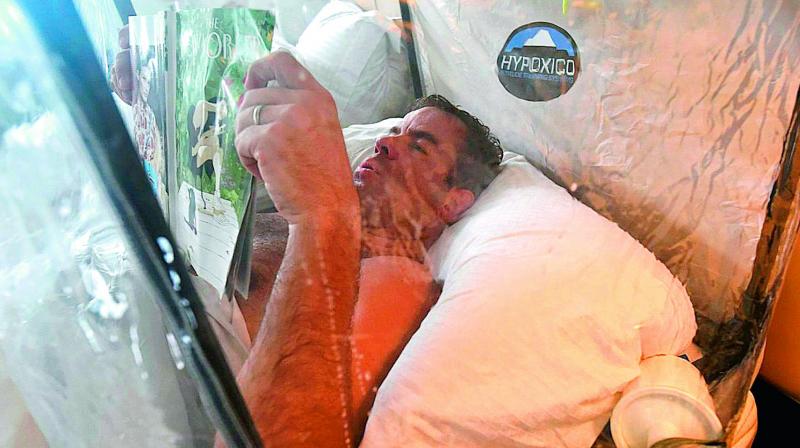Acclimatise in bed, climb Everest in half time

As other Everest hopefuls were trudging up to base camp in April, Singapore-based Brooks Entwistle was at home, planning his daughter’s 13th birthday party and preparing for his company’s annual general meeting.
But at night he would climb into a hypoxic, or low oxygen, tent meant to mimic the thin air at high altitude.
Now on Everest, Entwistle, a partner with Singapore’s Everstone Group, is hoping to summit the world’s highest peak in just 35 days — half the time of a conventional climb.
For decades, the dream of reaching the summit of Mount Everest has required at least two months on the mountain doing a series of acclimatisation rotations to get used to the harsh low-oxygen environment at the top of the world.
Now pre-acclimatisation, which has been at the fringes of the climbing world for several years, is gaining traction, dividing the community between those who see it as yet another tool of modern mountaineering and purists who dismiss it as a gimmick.
An increasing number of expedition organisers are offering “rapid ascent” packages that allow clients to pre-acclimatise in a tent at home before zipping up the world’s tallest peaks in just a few weeks.
Entwistle and climbers with at least two other operators are attempting to summit Everest this year after using pre-acclimatisation tents, each paying between $75,000 and $85,000, more than double the cheapest rates to scale Everest the conventional way.
Proponents of pre-acclimatisation say spending less time on the mountain lowers the risk of frostbite, accidents and extreme weight loss commonly associated with high-altitude mountaineering.

